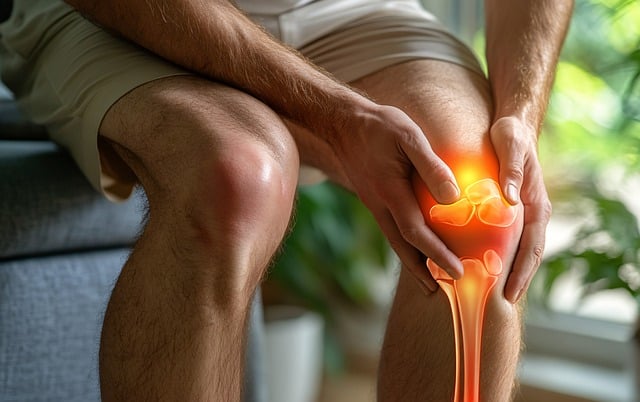Platelet-Rich Plasma (PRP) therapy has gained significant attention in recent years as an innovative treatment option for joint pain and related musculoskeletal conditions. Leveraging the body’s natural healing mechanisms, PRP offers the potential to reduce pain, improve mobility, and enhance tissue regeneration. Below is an in-depth exploration of PRP therapy, including answers to ten common questions that many patients have.

Table of Contents
Toggle1. What Is PRP Therapy?
PRP therapy involves the extraction of a small amount of a patient’s blood, which is then processed to isolate and concentrate the platelets. These platelets are a vital component of the blood, rich in growth factors that play a key role in tissue healing and inflammation regulation.
The concentrated platelet solution, known as platelet-rich plasma, is reinjected into the affected joint or tissue. This process aims to amplify the natural repair mechanisms of the body, addressing tissue damage at the cellular level. The therapy has been embraced in orthopedics, sports medicine, and even cosmetic applications due to its versatility and minimally invasive nature.
2. How Does PRP Work for Joint Pain?
PRP therapy works by harnessing the regenerative properties of platelets, which are primarily responsible for clotting blood and releasing growth factors necessary for healing. When injected into a damaged joint, these growth factors:
- Stimulate the repair of cartilage, ligaments, tendons, and other connective tissues.
- Regulate inflammation, reducing pain and swelling.
- Recruit stem cells to the site, further enhancing the regenerative process.
- This dual action of repair and inflammation modulation makes PRP particularly effective in treating chronic joint pain, where traditional treatments often only mask symptoms without addressing underlying damage.
3. What Conditions Can PRP Treat?
PRP therapy is increasingly being used to treat a variety of musculoskeletal and orthopedic conditions, including:
- Osteoarthritis: Particularly effective for knee, hip, and shoulder osteoarthritis, PRP can help regenerate cartilage and reduce joint inflammation.
- Tendonitis: Common in conditions like tennis elbow or Achilles tendonitis, PRP promotes tendon healing and reduces chronic pain.
- Ligament Injuries: Mild to moderate ligament tears, such as those in the knee (e.g., ACL), can benefit from PRP injections.
- Muscle Strains: PRP is also used to accelerate recovery in athletes dealing with muscle injuries.
- Rotator Cuff Injuries: For individuals with partial rotator cuff tears, PRP can aid in tissue repair.
Emerging research also suggests that PRP may hold potential for other conditions, such as degenerative disc disease and plantar fasciitis.
4. How Is the PRP Procedure Performed?
The PRP therapy process typically consists of the following steps:
- Blood Collection: A small amount of blood (usually 15-50 milliliters) is drawn from the patient’s arm.
- Centrifugation: The blood sample is placed in a centrifuge, which spins at high speed to separate its components—red blood cells, plasma, and platelets.
- Preparation: The platelet-rich portion of the plasma is extracted and prepared for injection. This process usually takes about 10-15 minutes.
- Injection: Using ultrasound guidance, the PRP is injected precisely into the affected joint or tissue to maximize efficacy. Local anesthesia may be applied to minimize discomfort.
The entire procedure takes approximately one hour and is performed on an outpatient basis, allowing patients to return home shortly after.
5. How Many PRP Treatments Are Needed?
The number of PRP injections required varies depending on the specific condition, its severity, and the patient’s individual response to treatment.
- Mild conditions: A single PRP injection may be sufficient.
- Moderate to severe conditions: A series of two to three injections spaced 4-6 weeks apart is often recommended for optimal results.
- Chronic conditions: Ongoing or maintenance injections may be needed every 6-12 months.
Your healthcare provider will evaluate your condition and create a personalized treatment plan tailored to your needs.
6. How Soon Can I Expect Results From PRP Therapy?
The timeline for noticing improvements after PRP therapy varies among patients.
- Initial phase (1-2 weeks): Some patients experience mild soreness at the injection site, which typically subsides quickly.
- Early improvements (2-6 weeks): Pain relief and increased mobility may start to become noticeable as inflammation decreases.
- Peak benefits (3-6 months): The full effects of PRP therapy are often realized as tissue repair and regeneration progress.
Patients with chronic or severe conditions may require additional time to experience the maximum benefits.
7. Are There Any Risks or Side Effects Associated With PRP?
PRP therapy is generally considered safe, as it uses the patient’s own blood, reducing the risk of allergic reactions or rejection. However, as with any medical procedure, there are potential risks and side effects:
- Temporary pain, swelling, or stiffness at the injection site.
- Minor bleeding or bruising.
- Rarely, infection or nerve damage at the injection site.
Patients should discuss their medical history and any concerns with their healthcare provider to ensure PRP therapy is appropriate for them.
8. Is PRP Therapy Covered by Insurance?
Despite its growing popularity, PRP therapy is often classified as an experimental or investigational treatment by insurance companies. As a result, it may not be covered under standard insurance plans.
- Costs: A single PRP injection typically ranges from $500 to $2,000, depending on the provider and geographic location.
- Reimbursement: Some insurers may partially cover PRP therapy if it’s part of a broader surgical or rehabilitative plan.
It’s advisable to contact your insurance company beforehand to confirm coverage and explore potential reimbursement options.
9. How Does PRP Compare to Other Joint Pain Treatments?
PRP therapy offers several advantages over traditional treatments for joint pain:
- Corticosteroid Injections: While effective for short-term pain relief, corticosteroids may weaken joint tissues over time and do not promote healing.
- Hyaluronic Acid Injections: Often used for osteoarthritis, these injections provide lubrication but do not address underlying damage.
- Surgical Interventions: PRP offers a minimally invasive alternative to surgery, with lower risks and shorter recovery times.
PRP is particularly appealing for individuals seeking a natural, regenerative approach to managing joint pain.
10. Who Is a Good Candidate for PRP Therapy?
PRP therapy is most suitable for:
- Individuals with mild to moderate joint pain who want to avoid or delay surgery.
- Patients who have not responded well to conventional treatments like physical therapy or medications.
- Active individuals or athletes looking to recover quickly from injuries.
It may not be recommended for patients with severe arthritis, blood disorders, or active infections. A consultation with a healthcare provider can determine if PRP is the right option for you.
Conclusion
Platelet-Rich Plasma (PRP) therapy represents a promising and innovative approach to treating joint pain and musculoskeletal conditions. By leveraging the body’s natural healing mechanisms, PRP not only alleviates pain but also promotes tissue repair and regeneration. While it may not be suitable for everyone, PRP therapy has shown significant potential for improving the quality of life for many patients.
If you’re considering PRP therapy, consult with a qualified healthcare provider to explore whether it aligns with your health goals and condition. With its regenerative focus and minimally invasive nature, PRP may be the solution you’ve been searching for to manage joint pain effectively.
Experience Relief From Joint Pain With PRP Therapy in Tempe, Arizona, At The Strength Doctor
Are you struggling with joint pain and seeking a proven treatment to support your recovery and enhance your quality of life? At The Strength Doctor, PRP (Platelet-Rich Plasma) Therapy is designed to work in harmony with your body’s natural healing processes, offering effective relief and improved joint function. This cutting-edge therapy helps reduce pain, promote tissue repair, and maximize your body’s ability to heal itself.
What sets this care apart is Dr. Clark’s dedication to your long-term health and recovery. With personalized attention, Dr. Clark crafts a PRP therapy plan tailored specifically to your needs and goals. Each treatment is informed by a comprehensive health evaluation, giving you the tools to make empowered decisions about your wellness journey. The Strength Doctor’s services reflect a commitment to the highest standards of care, ensuring you experience lasting results.
Are you ready to reclaim a life free from joint pain? Discover the transformative benefits of PRP Therapy with The Strength Doctor in Tempe, Arizona. Contact us today to schedule your consultation and take the first step toward optimal joint health and vitality. Don’t wait—let The Strength Doctor guide you toward lasting relief!
Disclaimer
The materials available on this website are for informational and entertainment purposes only and not to provide medical or legal advice. You should contact your physician and attorney for advice concerning any particular issue or problem. You should not act or refrain from acting based on any content included in this site without seeking legal or other professional medical advice. The information presented on this website may reflect only some current legal or medical developments. No action should be taken in reliance on the information on this website. We disclaim all liability concerning actions taken or not taken based on any or all of the contents of this site to the fullest extent permitted by law.
